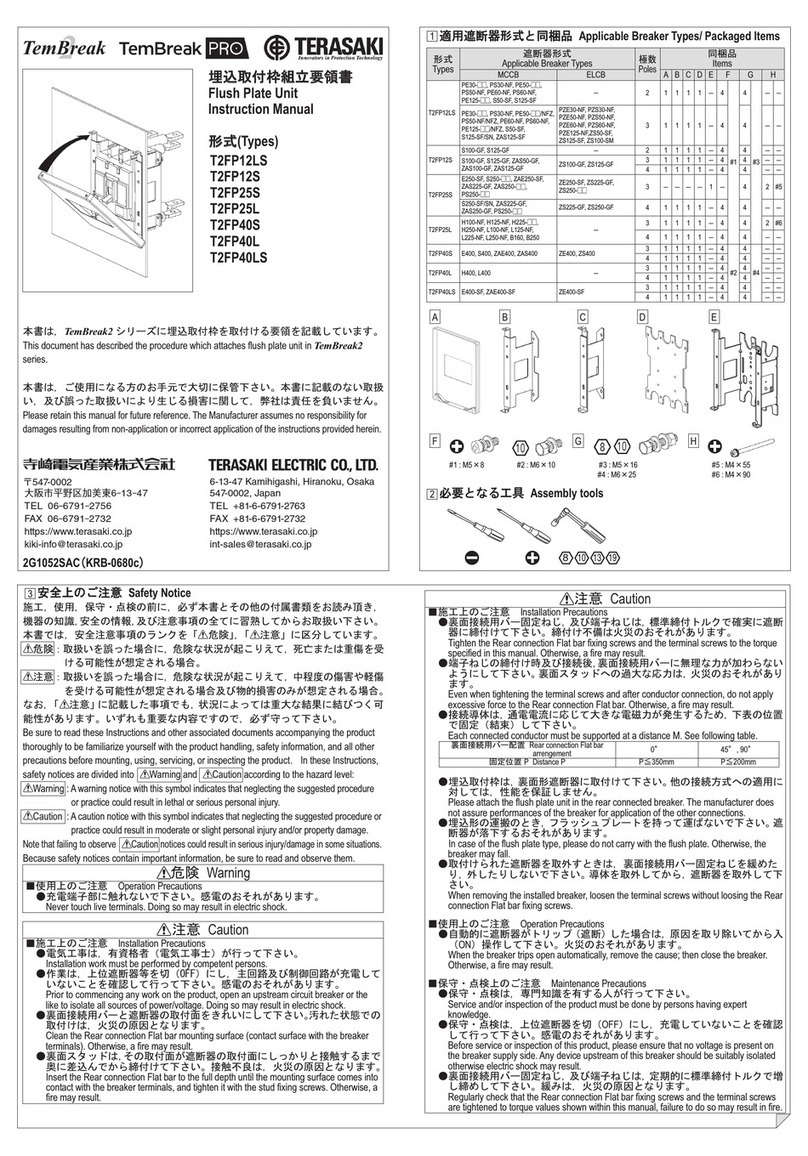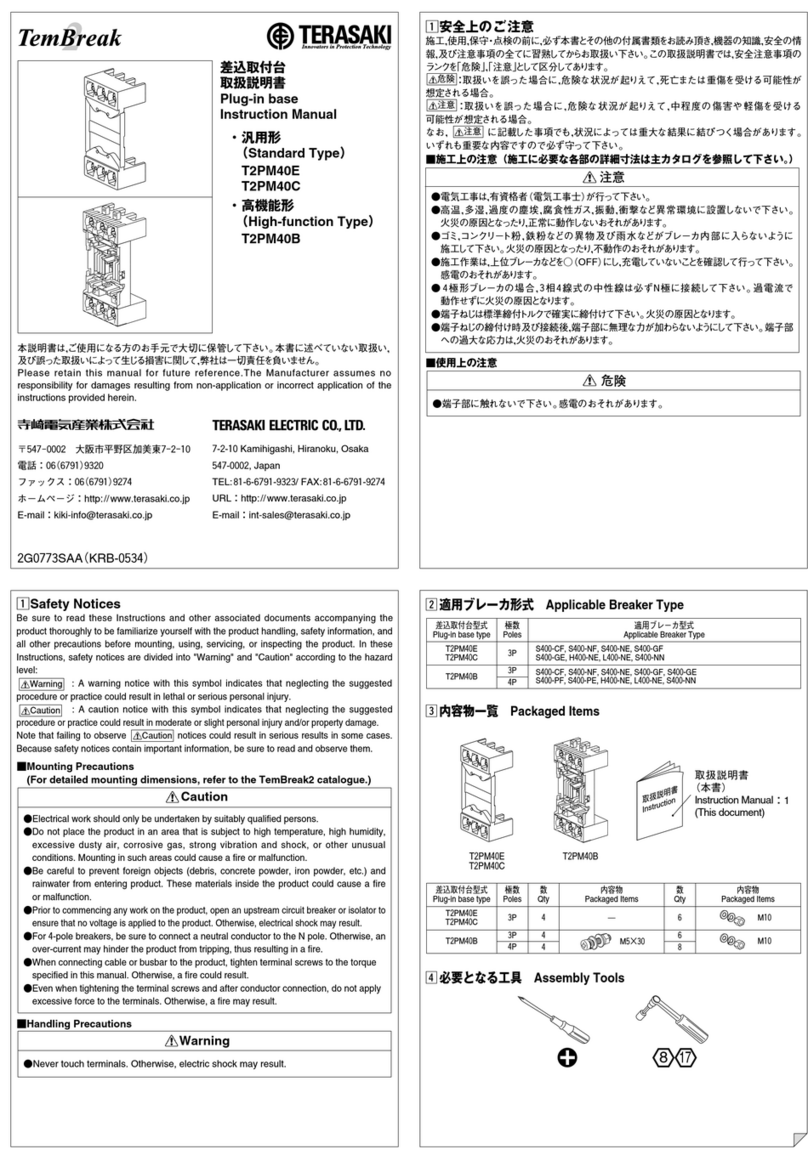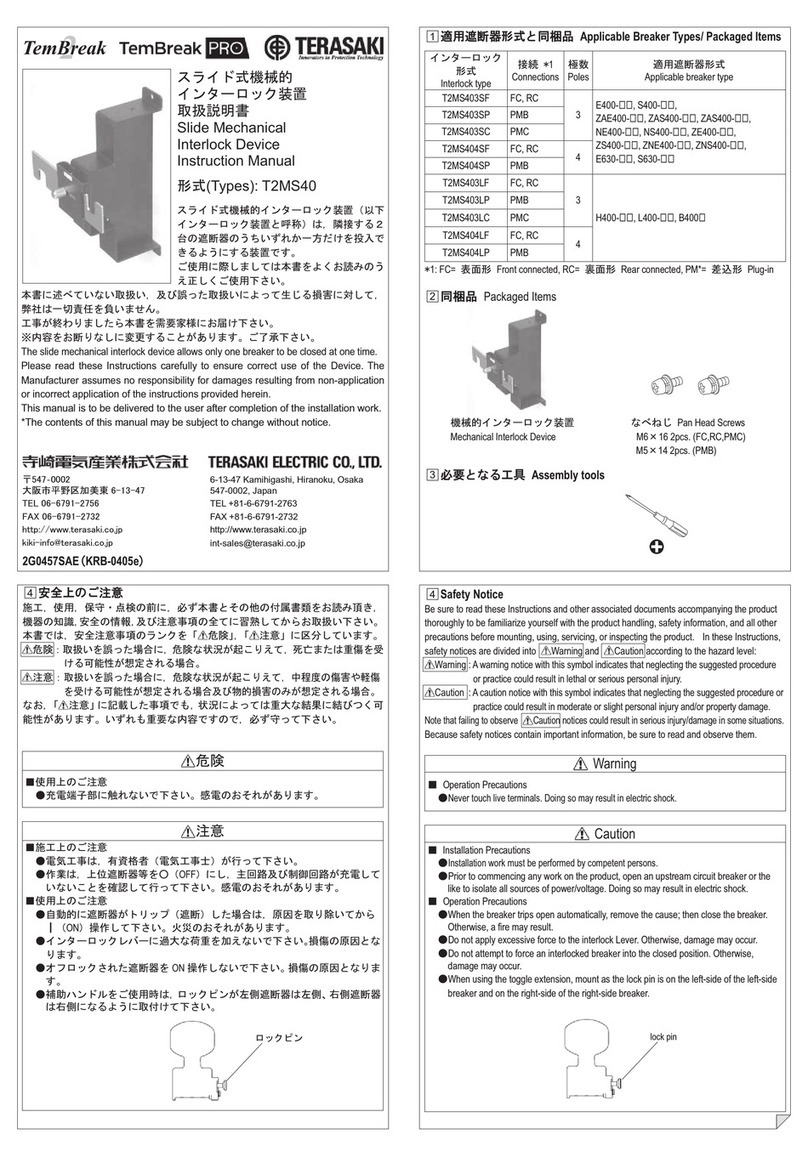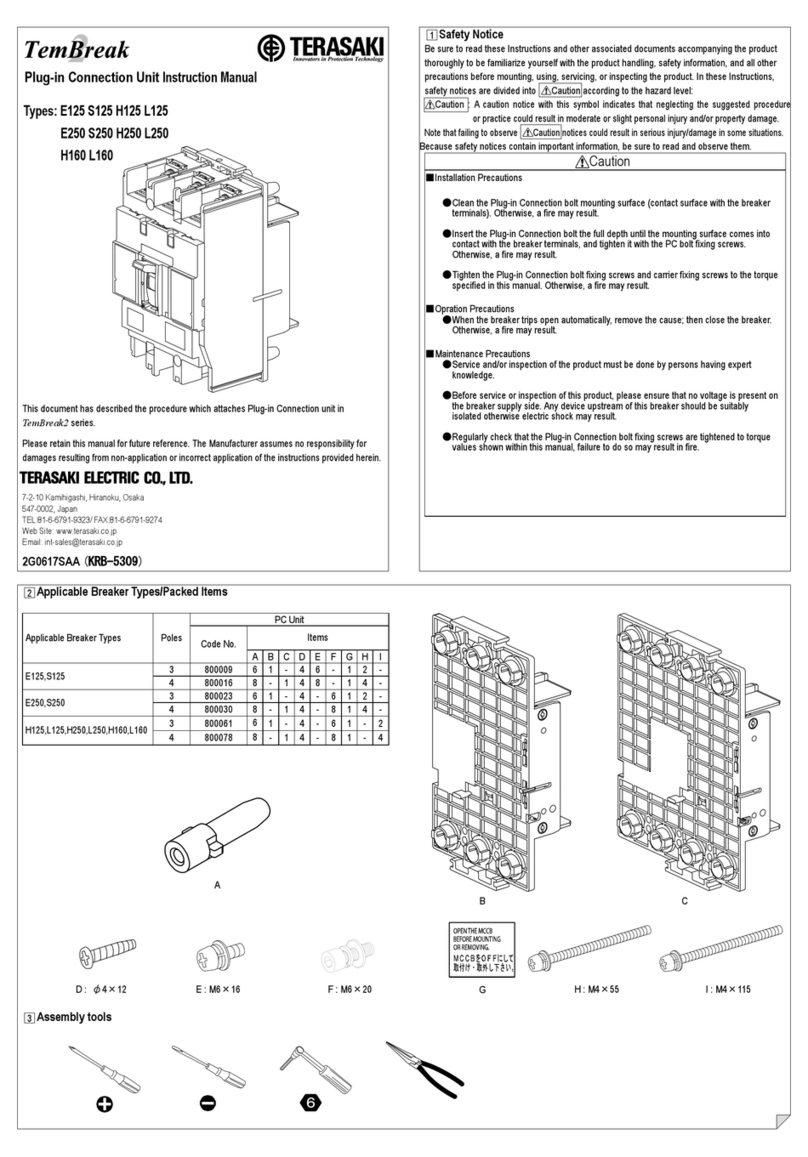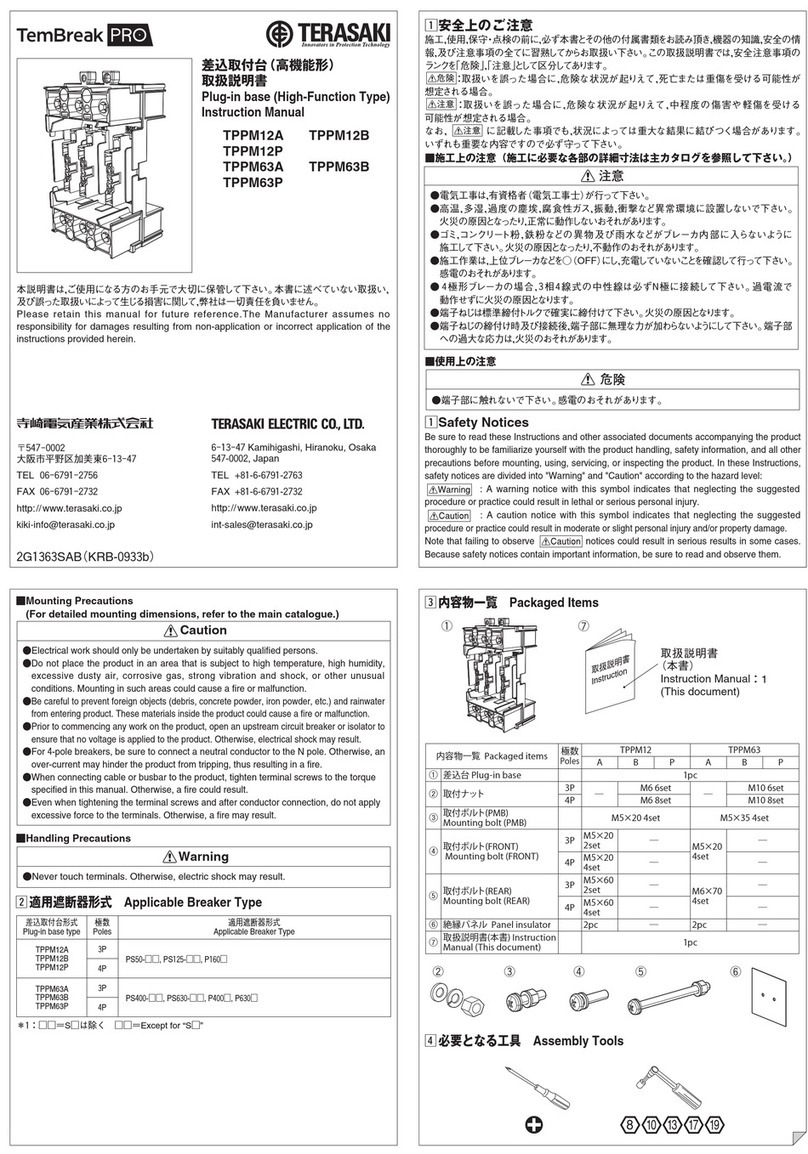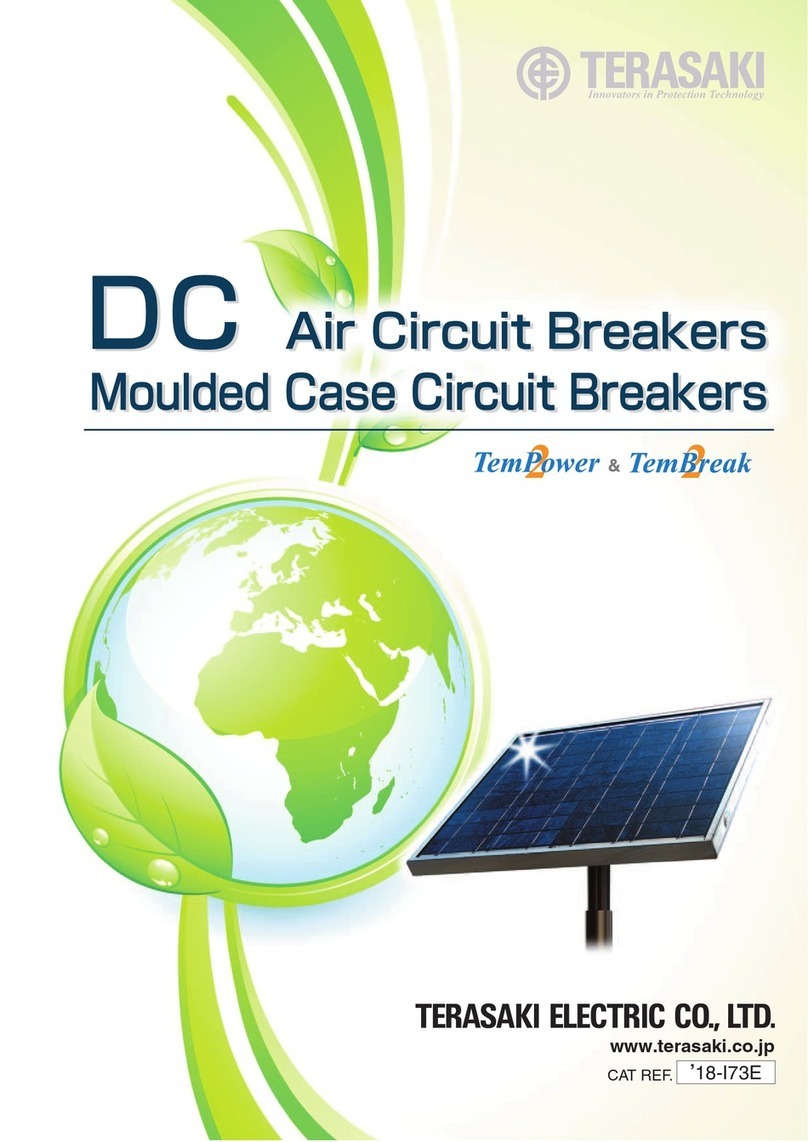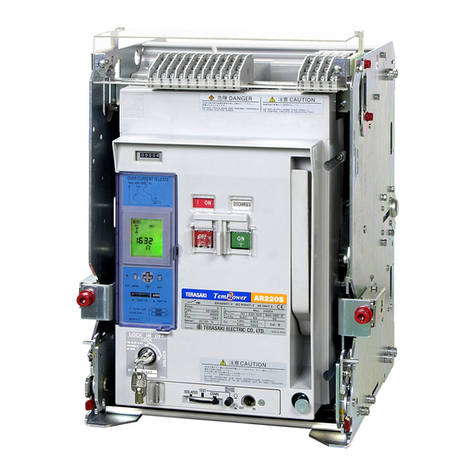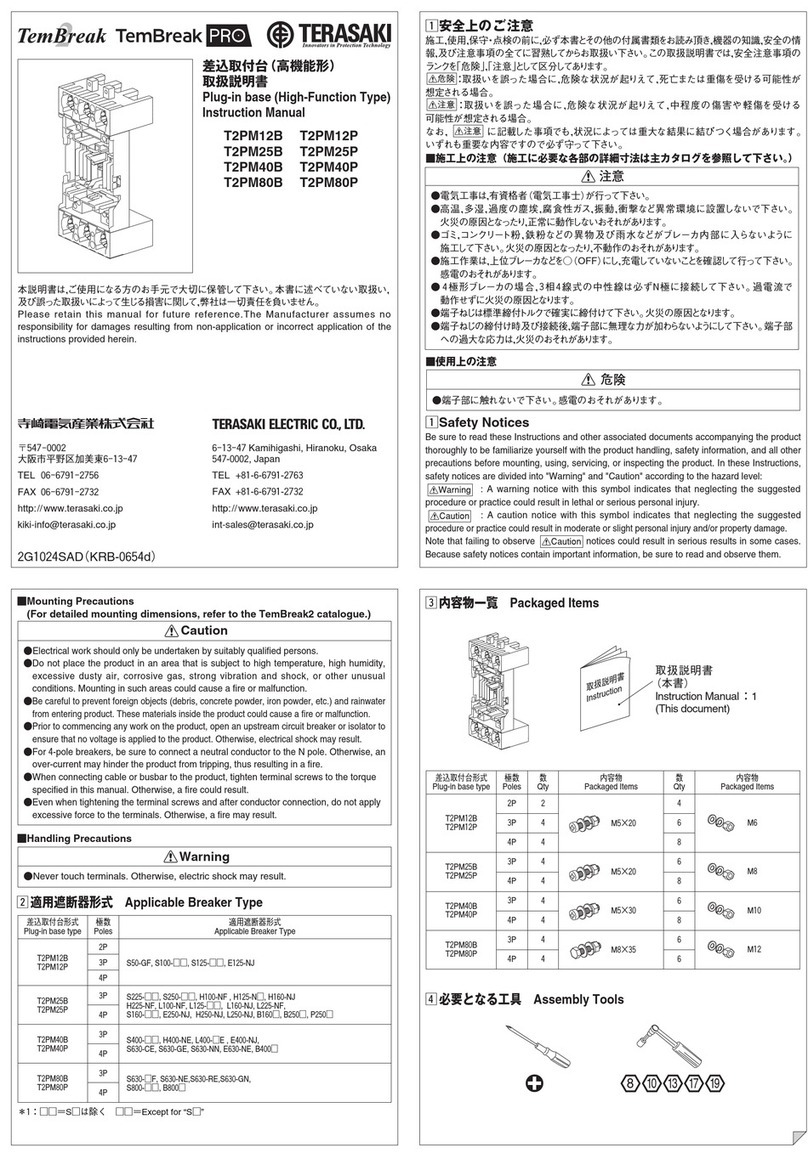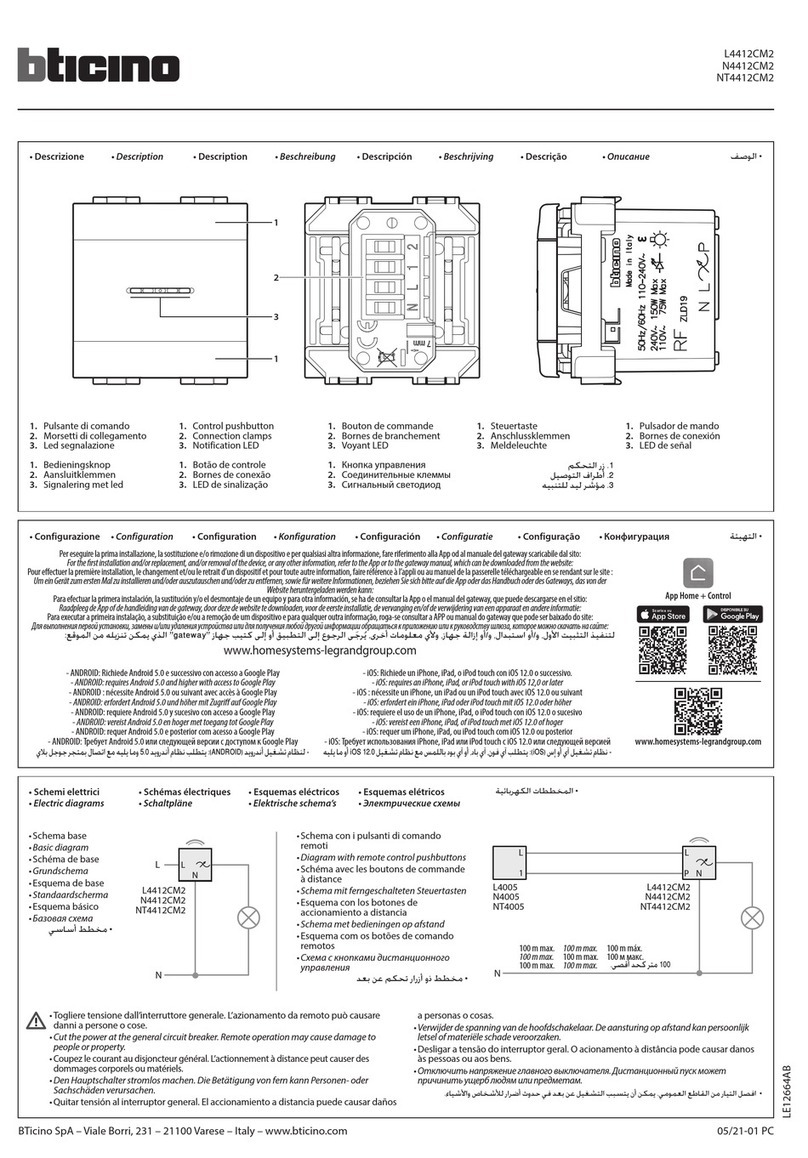
KRB-5368c
Operation Precautions (continued)
Repeated open/close operation by the motor charging mechanism without pause should not exceed 15 times. If repeated
continuous open/close operation is inevitable, a pause of at least 20 minutes should be provided after the repetitions of 15
times. Otherwise, a spring charging motor may be burnt out.
Do not bring your hand or face close to arc gas vent of the arc chamber while the ACB is closed. Otherwise, a burn may result
from high-temperature arc gas blowing out of the arc gas vent when the ACB trips open.
If the ACB trips open automatically, remove the cause of tripping operation before re-closing the ACB. Otherwise, a fire
OCR (Overcurrent Release) Handling Precautions
OCR setting changes must be performed by competent persons.
After setting changes are made, the settings be checked with e.g., a type ANS2S OCR test interface unit (optional).
After completion of OCR tests, be sure to return the settings to the original values. Failure to do so may cause a fire or
burnout.
Before changing OCR settings, open the ACB and then lock the OFF button to prevent the ACB from being closed
inadvertently.
Use a small flatblade screwdriver with a torque of not more than 0.1 N·m or a force of not more than 0.1 N when adjusting the
setting switches (rotary step switches or slide switches). An excessive torque or force may cause a malfunction.
Maintenance and Inspection Precautions
ACB maintenance, inspection and parts replacement must be performed by competent persons.
Do not touch ACB current carrying parts and ACB structural parts close to a current carrying part immediately after the ACB
trips open. Remaining heat may cause a burn.
Prior to commencing any work on the ACB, open an upstream circuit breaker or the like to isolate all sources of
power/voltage from the main and control circuits. Otherwise, electric shock may result..
Prior to commencing maintenance, inspection, or parts replacement, make sure that the closing springs are released and the
ACB is open. Otherwise, unintentional open/close operation may lead to fingers or tools to be pinched by the open/close
mechanism, resulting in injury.
Retighten the terminal screws periodically to the specified torque. Otherwise, a fire could result.
When grinding a contact tip, be careful to prevent grinding dust from entering the breaker operating mechanism. Wipe the tip
clean after grinding. Otherwise, a malfunction or fire could result.
Do not perform dielectric withstand tests under other conditions than specified. Doing so may cause a malfunction.
Be sure to reinstall the arc chamber if removed. Failure to do so or incorrect installation of the arc chamber may result in a fire
or burn.
When charging the closing springs or performing open/close operation of the ACB with the arc chamber, front cover and/or
side covers removed during maintenance or inspection work, do not touch parts other than those required for the above
operation (charging handle, ON/OFF buttons, moving core and the like). Doing so may cause fingers or tools to be pinched,
resulting in injury.
When replacing an auxiliary, do not damage the control wire for the auxiliary or pinch the wire between the auxiliary and the
breaker body. Doing so may cause a malfunction.

